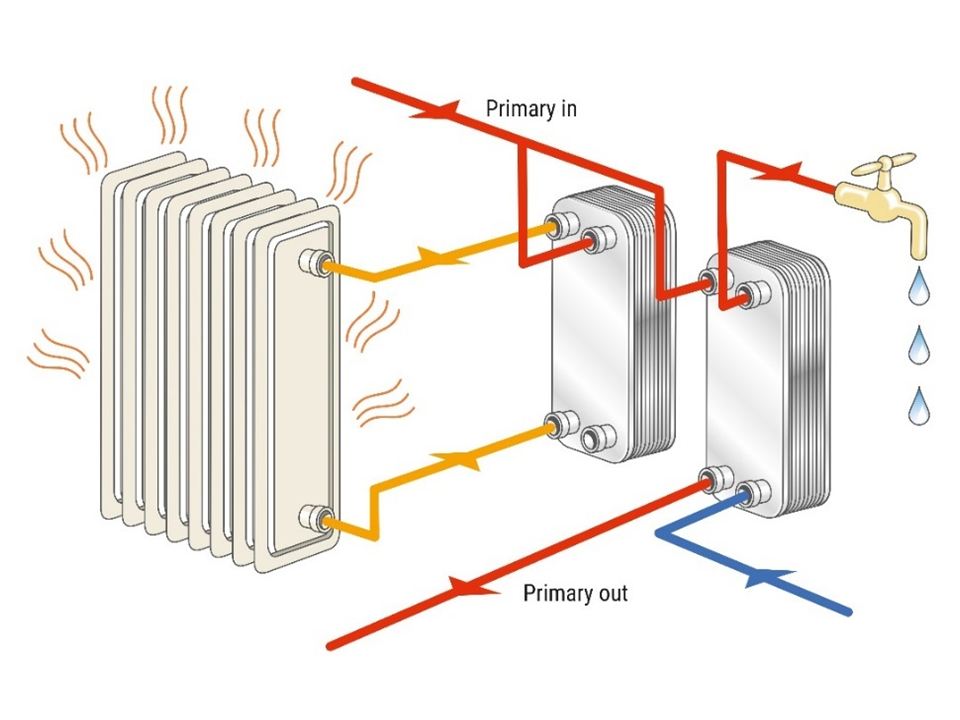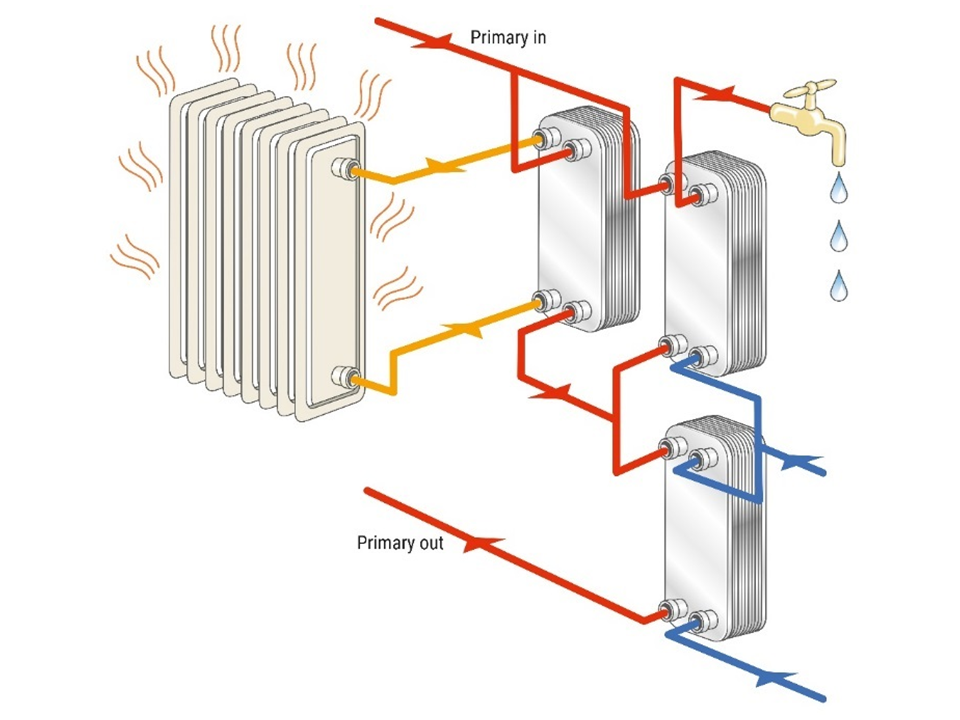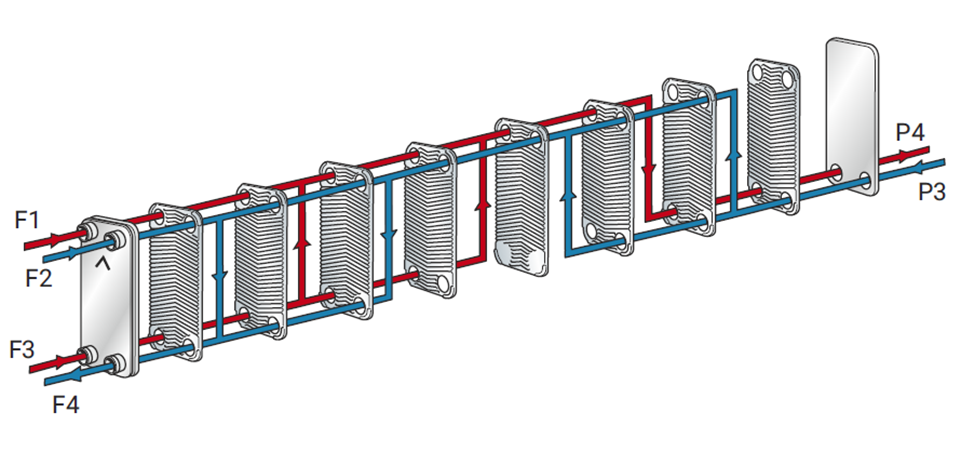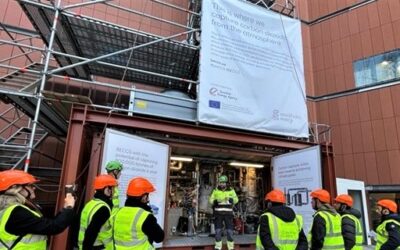A generally accepted way of efficiently reducing energy demand and thus consumption and cost is to decrease return flow temperatures via the heat exchanger or substation on building or unit level. SWEP has a simple but advanced way of achieving low return temperatures through their brazed plate heat exchangers - read on to see how can it be done.
Substations in Heat Network installations can be arranged in either a parallel or a 2-stage set-up. The 2-stage system is commonly used in Heat Network to reduce the returned water temperature. Returned water from the radiator circuit heat exchanger is used to preheat the domestic hot water. The proportion of heat utilised for preheating and post-heating respectively are set in such a way as to make the most efficient use of the return temperature from the radiator circuit. If the building concerned has a substantial demand for hot water, this connection arrangement generally results in a lower return temperature than would be the case from a parallel connection.
By using separate heat exchangers for space heating and hot tap water systems, the primary heat carrier is cooled only once in a traditional parallel system.

The primary return flow from the radiator heat exchanger is mixed with the primary flow from the after-heater. The mixed flow enters a third heat exchanger, the preheater. Its main purpose is to preheat the cold water before it enters the after-heater and is therefore called a 2-stage system.

Looking into more detail of the 2-stage system, the below schematically shows two-fold execution, but the tap water units will be merged into one unit by following two, subsequent stages.

The cooling of the return water in a typical parallel design is 43 °C, whereas for a 2-stage design it can be anything between 43 and as low as 29,67 °C;. This partly depends on heat load but mostly on how much water the consumer uses. The contribution is then the value per 1K reduction. Having a low return temperature is beneficial both in terms of efficiency and economy, as distribution losses are minimised and the pump power requirement is reduced.
SWEP has identified that customer facilities with high energy use and fluid consumption affect the return temperature the most. If the cooling projection is implemented, the 2-stage system can reduce return temperature considerably as it targets customer’s facilities (buildings and units). While the benefits for demand and carbon reduction are clear, the challenge to raise awareness and change consumer behavior remains.
Sweden is at the forefront of decentralised heat networks technology. Our aim for “Heat Networks – Sustainability by Sweden” is to facilitate knowledge sharing between British and Swedish stakeholders and develop and encourage environmental and economic best practice.
To find out how we can help you and your organisation, please contact our London-based “Heat Networks” team. We can introduce you to leading consultants, suppliers of technology and services who will be pleased to share know-how of the development of heat network solutions.


